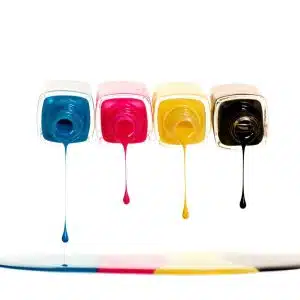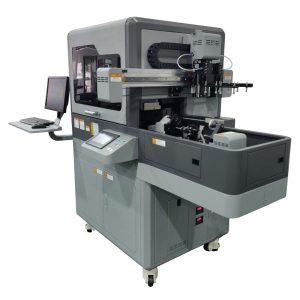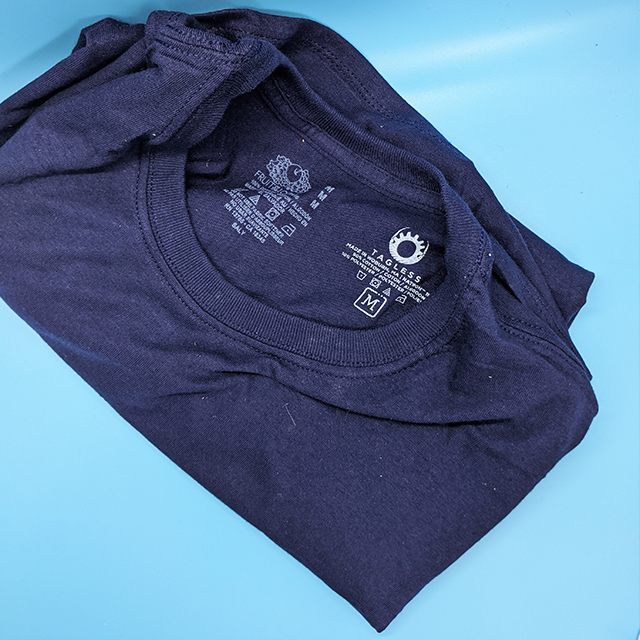What are the different methods of tagless label printing?
There are three methods of tagless label printing. These methods are heat transfers, pad printing, and screen printing.
As discussed in our article What is tagless printing?, the first example of tagless lable was in 1874 from cigar makers. At the turn of the 20th century, union labels were used by a variety of labor groups, both inside and outside of garments. The labels were sewn in on the garment. Fast forward, in 1939 Federal law slowly started to regulate how clothing items were designated starting first with the Wool Products Labeling Act of 1939. With introduction of thermal heat transfer in 1981 world’s first thermal-transfer label printer SATO M-2311 was introduced, this is according to wikipedia.org. Later, this technology was adopted for textile printing. In this article, we will cover the three methods of tagless label printing.
Heat transfer tagless labels
Initially, Tagless label printing was done using heat to apply to apparel. The design or logo is printed onto a heat transfer paper. Then, additional additives such as powder are added. Once the label is ready, the label is placed on the garment, and then using heat the design is transferred onto the textile. Once it cools off, the paper is peeled off, leaving the image on the textile. For T-shirt printing, the initial quality of the print is unmatched buy both screen printing or pad printed label. However, this quality deteriorates very fast. As a result, heat transfer labels are not ideal for tagless printing. Additionally, several steps are required to make this process successful. These steps are costly and are not efficient in high volume production set up.
See the Volta™ S150 table top screen printing machine printing on t-shirts.
Pad printing tagless label printing
Pad printing require special solvent-based inks to print labels directly onto apparel, e.g. Natron™ ST Series inks. Like screen printing, pad printing provides a no feel effect on the garment. The ink is pushed into the threads. As a result, the ink dyes the fabric. This process introduces an opacity issue on dark substrates. As a result, white prints on dark fabrics don’t exist. The same goes for red or blue colors on dark fabrics. The biggest advantage of pad printing is speed and ability to do two color prints. However, the initial start up costs is very high, roughly $10,000.00 – $15,000.00.
Learn more about Volta™ M2150 2-Color pad printer machine for tagless printing
Screen printing tagless label printing
Screen printing tagless printing utilizes a mesh screen, a squeegee, and a special ink to directly print the care label onto the apparel. Until now, this pad printing was the de-facto method for high speed printing. The Volta™ S150 Screen printer has changed that by offering same speed and ease of use as a pad printer. Not to mention the start up costs is less than half of pad printing process. Additionally, the cost of supplies are less. This is coupled with longer life of the screens. The key advantages of screen printing are:
- Soft premium feel
- High opacity
- Durable prints
- Ability to print on high end apparel
- Beautiful prints that last forever
- Low start up and operation costs
- Very short learning curve.
Visit our gallery page to see more for yourself or contact us for samples.











